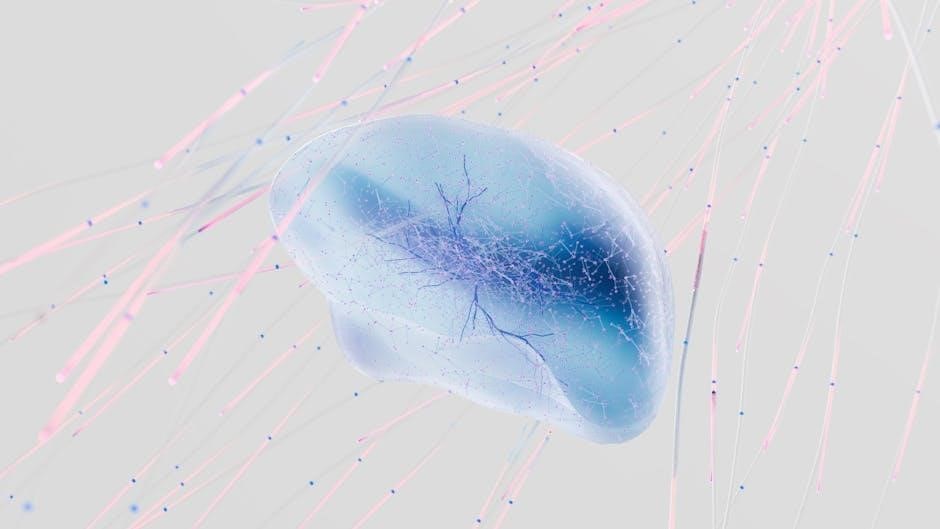Nick Bare’s Hybrid Training Program is a comprehensive fitness regimen designed to combine strength training and endurance workouts, helping individuals build muscle and improve cardiovascular performance effectively.
1.1 Overview of the Hybrid Athlete Concept
Nick Bare’s Hybrid Athlete concept focuses on blending strength training and endurance workouts to create a balanced fitness regimen. It targets individuals seeking to build muscle and enhance cardiovascular performance simultaneously. The program emphasizes a structured approach, combining resistance exercises with running or cardio, ensuring overall fitness without sacrificing either aspect. This concept appeals to those who want to achieve both physical resilience and endurance, offering a holistic path to peak physical condition.
1.2 Importance of Combining Strength Training and Cardio
Combining strength training and cardio is essential for achieving overall fitness and functionality. Strength training builds muscle and improves power, while cardio enhances endurance and cardiovascular health. Together, they promote injury resilience, boost metabolism, and optimize physical performance. This dual approach ensures a well-rounded physique, making it ideal for athletes and fitness enthusiasts seeking versatility in their workouts. The hybrid method addresses both aesthetics and functionality, providing a balanced and sustainable fitness routine.

Structure of the Hybrid Training Program
Nick Bare’s program is a structured regimen combining strength training and endurance workouts, designed to enhance overall fitness through a balanced and progressive approach.
2.1 Weekly Training Schedule
Nick Bare’s Hybrid Training Program typically follows a 4-6 day weekly structure, balancing strength training and endurance workouts. The schedule often includes two-a-day sessions, combining lifting and running. For example, four days might focus on strength and endurance, with two rest or active recovery days. Each session begins with a dynamic warm-up and mobility work. The program integrates running workouts with resistance training, ensuring a holistic approach to fitness; Proper nutrition and recovery are emphasized to support the rigorous training demands.
2.2 Phases of the Program (e.g., Build, Strength, Endurance)
Nick Bare’s Hybrid Training Program is divided into distinct phases, each targeting specific fitness goals. The Build phase focuses on establishing a foundation of strength and endurance, while the Strength phase emphasizes increasing power and muscle mass. The Endurance phase prioritizes cardiovascular fitness and stamina. Each phase lasts several weeks, allowing for progressive overload and adaptation. This structured approach ensures athletes build well-rounded fitness while avoiding plateaus, making it adaptable for both beginners and advanced trainees seeking balanced development.
2.3 Integration of Running and Lifting Workouts
Nick Bare’s program seamlessly integrates running and lifting to optimize both strength and endurance. Workouts are structured to alternate between intense strength sessions and endurance-based running, ensuring balanced development. For example, a typical week includes strength-focused lifting sessions paired with shorter runs, while endurance phases incorporate longer runs alongside maintenance strength work. This integration prevents overtraining and enhances overall fitness by allowing muscles to recover between high-intensity activities. The program’s design ensures athletes can simultaneously improve power and cardiovascular health without compromising progress in either area.

Key Components of the Program
Nick Bare’s Hybrid Training Program combines strength training, cardio, and mobility exercises, focusing on balanced development for overall fitness and resilience, structured over weekly phases.
3.1 Strength Training Exercises
Nick Bare’s strength training focuses on compound movements like squats, deadlifts, and bench presses to build muscle and power. The program also incorporates accessory exercises for muscle balance and injury prevention. Workouts are structured to target all major muscle groups, ensuring overall strength development. Resistance training is combined with progressive overload to continuously challenge the body. This approach helps athletes build a strong foundation, essential for both endurance and strength performance in the hybrid program.
3.2 Cardio and Endurance Workouts
Nick Bare’s program integrates cardio and endurance workouts, such as running, to enhance cardiovascular fitness and mental resilience. The training includes steady-state runs for building aerobic capacity and interval training for boosting anaerobic endurance. These workouts are structured to complement strength training, ensuring athletes can maintain endurance without sacrificing strength gains. The program progresses gradually, with increasing intensity and volume, preparing participants for both physical and mental challenges. This balanced approach helps hybrid athletes achieve optimal endurance and stamina while maintaining muscular strength and power.
3.3 Mobility and Recovery Techniques
Nick Bare emphasizes the importance of mobility and recovery to prevent injuries and improve performance. His program incorporates dynamic stretching, foam rolling, and yoga to enhance flexibility and muscle recovery. Techniques like active recovery runs and rest days are included to allow the body to heal. Additionally, Bare highlights the role of proper nutrition and sleep in recovery, ensuring athletes can train consistently without burnout. These strategies help hybrid athletes maintain peak performance while minimizing downtime and injury risks.

Nutrition and Diet for Hybrid Athletes
Nick Bare’s program stresses balanced nutrition, focusing on caloric intake and macronutrient ratios to fuel strength and endurance. Meal timing, hydration, and supplements are also emphasized for optimal performance and recovery.
4.1 Caloric Intake and Macro Balancing
Nick Bare emphasizes the importance of proper caloric intake and macronutrient balancing to support both strength and endurance. Athletes are advised to consume a surplus of calories to fuel muscle growth and recovery, with a focus on protein intake (1.2-2.2g per pound of body weight) to build and repair tissue. Carbohydrates are prioritized for energy, while fats support hormone production. The program recommends tracking macros and adjusting intake based on performance and body composition goals, ensuring a balanced diet that aligns with training demands.
4.2 Meal Planning for Optimal Performance
Nick Bare’s program emphasizes structured meal planning to fuel both strength and endurance training. Focus on whole, nutrient-dense foods like lean meats, fish, eggs, whole grains, and vegetables. Timing meals around workouts is crucial, with carb-rich meals 1-2 hours pre-workout and protein-rich meals post-workout for recovery. Hydration is also stressed, aiming for 3-5 liters of water daily. The program provides sample meal plans and portion guides, ensuring athletes meet their caloric and macronutrient needs while maintaining a balanced diet tailored to their training demands.
4.3 Supplements for Recovery and Growth
Nick Bare’s program recommends specific supplements to enhance recovery and growth. Protein powder is central, aiding muscle repair and growth, with a daily intake of 1-2 scoops. Creatine is suggested for strength and endurance improvements, while BCAAs support muscle recovery during intense workouts; Omega-3s reduce inflammation, and Vitamin D supports overall health. The program advises consulting a healthcare professional before starting any supplement regimen, ensuring it complements individual dietary needs and training goals without overcomplicating the nutrition plan.

Progress Tracking and Adjustments
Track strength gains and cardiovascular improvements through consistent monitoring. Adjust the program based on progress, ensuring optimal results and avoiding plateaus.
5.1 Measuring Strength Gains
Measuring strength gains involves tracking lifting progress, such as increased weights or reps. Regular assessments ensure workouts are effective and tailored to achieve muscle growth and power.
5.2 Monitoring Cardiovascular Improvement
Monitoring cardiovascular improvement involves tracking progress in endurance workouts, such as increased running distances, faster times, or lower heart rates during exercises. Using devices like heart rate monitors or apps can help measure improvements. Periodic assessments, such as time trials or pace checks, provide clear indicators of cardiovascular gains, ensuring the program is effectively enhancing endurance and stamina over time.
5.3 Adjusting the Program Based on Progress
Adjusting the program involves modifying workouts based on individual progress. If strength gains plateau, increasing weights or reps is recommended. For endurance, adding distance or intensity helps continue improvement. Regular assessments ensure the program remains challenging and effective. Tailoring the schedule to personal goals and progress fosters continuous improvement, allowing athletes to achieve optimal results and stay motivated throughout their fitness journey.

Benefits of the Hybrid Training Program
Nick Bare’s program enhances overall fitness by balancing strength and endurance, improving injury resilience, and boosting mental toughness for a well-rounded athletic performance.
6.1 Increased Overall Fitness
The Hybrid Training Program boosts overall fitness by merging strength and endurance. It enhances muscle mass, cardiovascular health, and functional athleticism, making daily activities and sports performance easier and more efficient.
6.2 Improved Injury Resilience
The Hybrid Training Program enhances injury resilience by strengthening muscles, tendons, and connective tissues. Balancing strength and endurance workouts improves joint stability and overall athleticism, reducing the risk of injuries during physical activities. The program’s focus on functional movements and progressive overload ensures long-term durability, making participants more resistant to common injuries associated with running or lifting. This balanced approach fosters a robust physique capable of withstanding various physical demands.
6.3 Enhanced Mental Toughness
Nick Bare’s Hybrid Training Program is renowned for fostering mental resilience. By combining challenging strength and endurance workouts, participants develop discipline and perseverance. The structured yet adaptable nature of the program encourages individuals to push beyond their perceived limits, building confidence and mental fortitude. This mental strength not only enhances workout performance but also translates into other areas of life, helping individuals tackle challenges with a more determined mindset. The program’s emphasis on consistency and progressive overload plays a key role in this development.

Comparisons with Other Training Programs
Nick Bare’s Hybrid Training Program stands out by blending strength and endurance, offering a balanced approach unlike traditional programs that focus solely on one aspect of fitness.
7.1 Differences from Traditional Strength Training
Nick Bare’s program differs from traditional strength training by incorporating endurance workouts. While conventional strength programs focus solely on muscle building, Bare’s approach integrates running and cardio, enhancing cardiovascular fitness alongside strength. This blend allows for a well-rounded athlete, capable of both physical power and sustained endurance. By combining these elements, the program avoids the limitations of single-focus training, offering a more versatile fitness regimen.
7.2 Contrasts with Pure Endurance Programs
Nick Bare’s program contrasts with pure endurance programs by emphasizing strength training. Unlike traditional endurance-focused regimens that prioritize cardiovascular fitness, Bare’s approach balances running with resistance workouts. This dual focus fosters muscle growth and power, which are often neglected in endurance-only plans. The integration of strength training enhances overall athleticism, making the program more comprehensive than typical endurance programs that may overlook muscular development. This approach creates a balanced athlete capable of both endurance feats and physical strength.
7.3 Unique Aspects of Nick Bare’s Approach
Nick Bare’s approach uniquely combines strength and endurance in a structured, balanced manner. Unlike other programs, it offers a blend of resistance workouts and running, tailored to enhance both muscle and cardiovascular performance. The integration of mobility and recovery techniques ensures sustainability. Additionally, Bare’s program emphasizes nutrition and personalized tracking, making it adaptable to individual goals. This holistic method creates versatile athletes, setting it apart from traditional single-focus fitness regimens. The result is a well-rounded fitness program that addresses multiple aspects of physical development.

Cost and Accessibility
The Hybrid Athlete Program is priced at $14.99/month, offering accessibility through an app with personalized training plans and community support, providing value for a balanced fitness approach.
8.1 Pricing of the Hybrid Athlete Program
The Hybrid Athlete Program is affordably priced at $14.99 per month, offering access to a structured training app with personalized plans for strength, endurance, and mobility. This cost includes detailed workout schedules, nutrition advice, and progress tracking tools, making it a cost-effective solution for those seeking a balanced fitness approach. Compared to hiring a personal coach, this program provides exceptional value, catering to individuals aiming to combine running and lifting effectively. The pricing remains competitive, ensuring accessibility for a wide range of fitness enthusiasts.
8.2 Availability of Resources and Support

The program offers extensive resources, including a mobile app with workout plans, meal guides, and progress tracking. Users gain access to a supportive online community, where they can share experiences and receive motivation. Additionally, the app is compatible with Garmin Connect, allowing seamless integration of fitness data. Regular updates and new content ensure participants stay engaged and informed, fostering a well-rounded support system to help them achieve their fitness goals effectively and sustainably. This comprehensive support enhances the overall program experience.
8.3 Value for Money Compared to Other Programs
Nick Bare’s Hybrid Training Program offers exceptional value at $14.99/month, providing a comprehensive blend of strength and endurance training. Compared to other fitness programs, it stands out for its affordability and holistic approach, combining personalized workout plans, meal guides, and community support. The program’s structured design and versatility make it a cost-effective option for those seeking to balance running and lifting. With its unique integration of fitness elements, it delivers a well-rounded experience that justifies the investment, making it a standout choice in the fitness market.

Success Stories and Testimonials
Many athletes have achieved remarkable results with Nick Bare’s program, sharing testimonials of increased strength, endurance, and overall fitness. Real-life transformations highlight its effectiveness and inspiring impact.
9.1 Athletes Who Have Benefited from the Program
Many athletes have experienced significant improvements in both strength and endurance through Nick Bare’s Hybrid Training Program. YouTuber Will Tennyson, for example, adopted Bare’s diet and training routine, showcasing the program’s effectiveness. Others have reported enhanced running performance and increased muscle mass. The structured workouts and balanced approach have helped individuals achieve their fitness goals, whether for competitions or personal growth. Testimonials highlight the program’s adaptability and transformative impact on athletes seeking a well-rounded fitness regimen.
9.2 Real-Life Results and Transformations
Participants in Nick Bare’s Hybrid Training Program have reported significant improvements in strength, endurance, and overall fitness. Many have achieved enhanced running performance and noticeable muscle growth. The program’s structured approach has helped individuals push past plateaus, with testimonials highlighting dramatic transformations. Users often cite increased energy levels and better physical resilience. The combination of strength and cardio workouts has proven effective, with many experiencing measurable progress within weeks. These real-life results underscore the program’s effectiveness in delivering a balanced and transformative fitness experience.
9.3 Community Support and Motivation
Nick Bare’s Hybrid Training Program fosters a strong sense of community, with participants sharing their journeys and supporting one another. Through social media groups and forums, athletes motivate and inspire each other, creating a collaborative environment. Nick Bare actively engages with the community, offering encouragement and tips, which further fuels participants’ dedication. The shared goal of balancing running and lifting unites members, fostering accountability and camaraderie. This collective support system plays a crucial role in helping individuals stay motivated and committed to their fitness goals.
Nick Bare’s Hybrid Training Program offers a transformative approach to fitness, blending strength and endurance for holistic growth, supported by a motivating community and structured guidance.
10.1 Final Thoughts on the Hybrid Training Program
Nick Bare’s Hybrid Training Program stands out as an effective, balanced approach to fitness, combining strength and endurance for well-rounded development. Its structured workout plans, including running and lifting, cater to both athletes and everyday individuals seeking improvement. The program’s emphasis on progression, nutrition, and recovery ensures sustainability and results. With a supportive community and accessible resources, it offers a motivating environment for those committed to their fitness journey. The hybrid approach proves that balancing strength and cardio is not only possible but also highly rewarding for overall health and performance.
10.2 Encouragement for Potential Participants
Embarking on Nick Bare’s Hybrid Training Program is a transformative decision for anyone seeking to enhance both strength and endurance. The program’s balanced approach ensures sustainable progress, catering to all fitness levels. With clear guidance, supportive community, and proven results, participants can confidently embrace the challenge. The hybrid method fosters resilience and mental toughness, making it an ideal choice for those ready to push their limits and achieve holistic fitness. Take the first step toward a stronger, more capable version of yourself with Nick Bare’s Hybrid Training Program.



















































